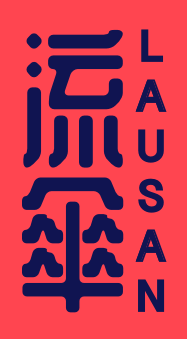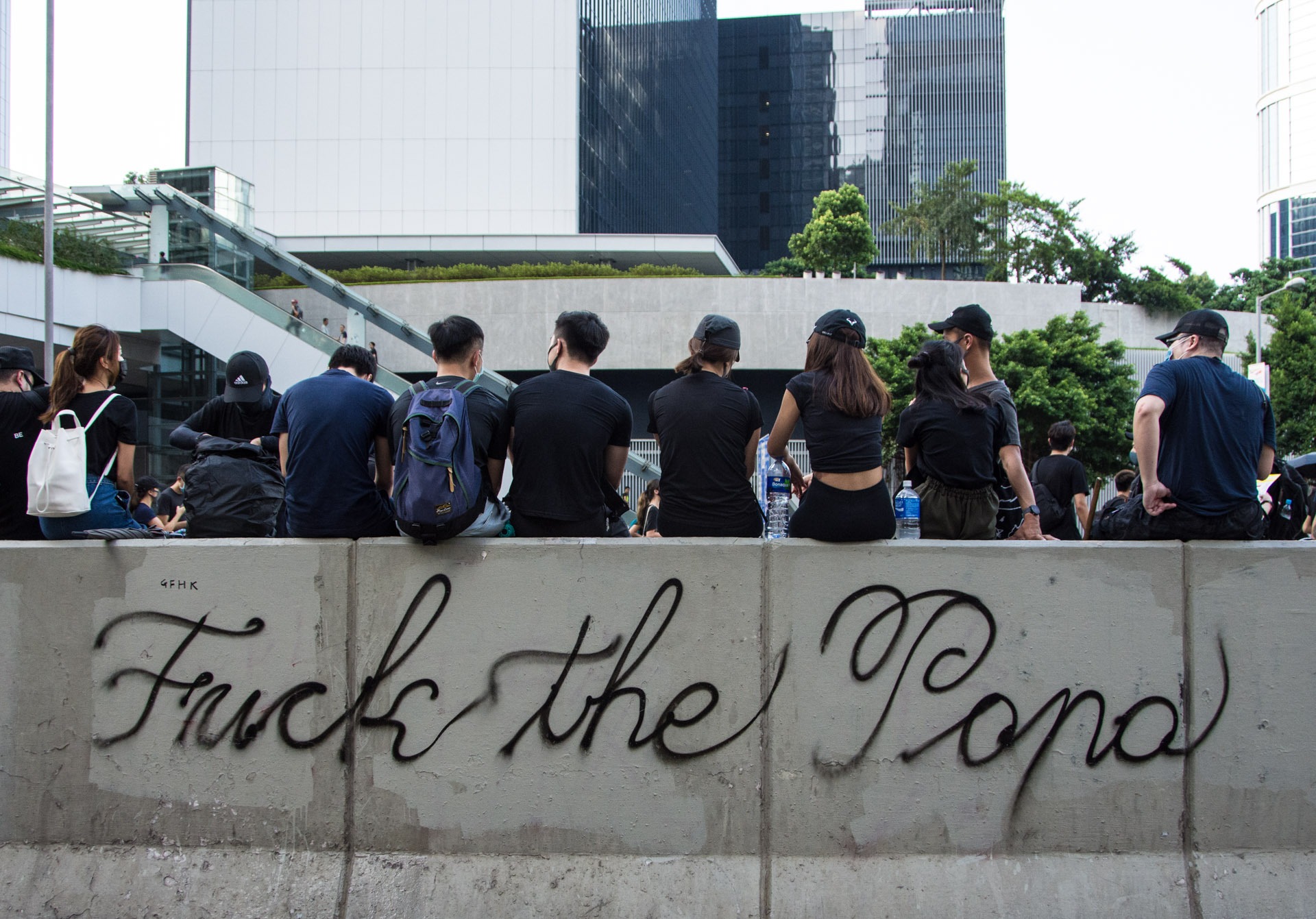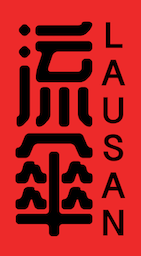“Abolition is a theory of change, it’s a theory of social life. It’s about making things.”
— Ruth Wilson Gilmore, “Prisons and Class Warfare”
“What is, so to speak, the object of abolition? Not so much the abolition of prisons but the abolition of a society that could have prisons, that could have slavery, that could have the wage, and therefore not abolition as the elimination of anything but abolition as the founding of a new society.”
— Fred Moten and Stefano Harney, The Undercommons: Fugitive Planning & Black Study
As the government continues to sanction increasing police violence to repress the protests in Hong Kong, the brutality enacted against Hong Kongers on the streets has escalated rapidly. Some Hong Kongers have now articulated a “Sixth Demand”: 「解散警隊」or the dissolution of the Hong Kong Police Force (HKPF). A society without police may seem unimaginable and naturally questions abound: What does “dissolution” look like and what would be its contours and ramifications? Does dissolution entail reconstitution? Or does it refer to the abolition of policing altogether? What would community safety and accountability look like in the absence of a monopoly on force and incarceration? How are ethnic, racial, sexual, and gender minorities unequally exposed to policing and incarceration? How do policing and incarceration act in tandem as a de facto mechanism of immigration control, and vice versa? How can we responsibly and realistically think about a police- and prison-free future in the face of authoritarian threat?
In this reading list, we hope to address some of these issues by providing basic context about policing and incarceration’s relationship to the capitalist system, especially in Hong Kong. It is critical to recognize that the police are both the strong-arm and the face of capitalism in cities and nations across the world. As anarchist collective CrimethInc reminds us in their essay, you may never see the landlord, CEO, bank manager, or politician who reap the most benefits from capital, but you will see the police sent to repossess, arrest, or breakup your protest. Hong Kong is no different. Even law and order, two concepts that the HKSAR government has insisted are a key component of the “One Country, Two Systems” framework, are themselves the ideological products of the colonial penal and legal code—and therefore inseparable from state power and the hyper-exploitation of workers.
This wage slavery is being papered over in favor of sympathy narratives for corporations. What is the logic behind praising Hong Kong frontliners for not “stealing” from the vandalized shops and corporate chains that have been displacing mom-and-pop small businesses even before 1997? Would there be “rioters” and “thieves” in a world where resources are distributed equitably? When we say things like “we need the police to protect us,” who are the police actually protecting, and from what? Or perhaps a better question is: who are the police protecting from us? As Wilfred Chan and JN Chien argue in The Nation, the Hong Kong government enacting martial law has proven that police are the militarized security force that ensured a smooth transition from one state capitalist regime to another—and that elite class interests were never threatened in that move.
After recognizing our common enemies as the police and the capital interests they protect, what are our options beyond mere reform? In this reading list, we are indebted to the rich history of Black radical abolitionist work, which sees policing as inseparable from the founding violence of the state. In the U.S., this means understanding policing as predicated upon the enslavement of black and brown people and the ongoing dispossession of Indigenous peoples. Needless to say, Hong Kong has its own socio-political context. Yet modern wage labor and global capitalism means workers experience a shared (though not equivalent) oppression: the violent crackdowns by paramilitary police against uprisings around the world, amid the incessant upward shifting of wealth in colonial, capitalist, and liberal democratic states alike, reveal powerful lines of solidarity for dispossessed people everywhere.
At their core, policing and incarceration close down our possibilities for life. Here, intellectual-activists in the U.S., such as Ruth Wilson Gilmore and Angela Davis, provide us with models for resistance and creation: self and community accountability, safety, redress, reparative justice. In Hong Kong, we believe that these new forms can emerge from the prefigurative politics practiced by protesters—and our long histories of survival and resilience—though much more will have to be developed from scratch. We hope this reading guide will open a conversation about what abolition could mean in Hong Kong.
Overviews: colonial and recent histories of the Hong Kong Police Force
Jack Hazlewood, “Hong Kong’s Police Violence Is Stamped Made in U.K.,” Foreign Policy (2019)
Hazlewood offers an account of how the United Kingdom used colonial Hong Kong as a testing ground for some of its most brutal policing tactics before introducing them in Great Britain. These tactics were then used to train officers who were sent to Hong Kong, where many of them (including HKPF commander Rupert Dover) continue to play key roles in the crackdown on protesters.
Karen Cheung, “People vs police: a short history of Hong Kong’s uneasy relationship with law and order,” New Statesman (2019)
Cheung argues that animosity towards the police, whose official motto is to “serve and protect Hong Kong,” is not new. Time and again, violence from the people is instigated by violence from the police, which makes a demand for a police force accountable to the people all the more urgent.
Michael Adorjan, “Perceptions of Policing and Security Among Hong Kong Migrant Sex Workers—a Research Note,” Asian Journal of Criminology (2019)
A preliminary study that seeks to examine if migrant sex workers have less positive views of HKPF than the general public, which a previous study indicated expressed high favorability. Results show migrant sex workers’ impressions depended on their legal residency status: if they possessed legal status, they were favorable and, if not, they were antagonistic, which suggests immigration control rather than anti-sex moralism is a central part of HKPF operations.
Norman Miners, “The localization of the Hong Kong police force, 1842–1947,” The Journal of Imperial and Commonwealth History (1990)
Miners traces the way in which the British colonial regime struggled to shape the HKPF, first in the image of the London Metropolitan Police Force, then basically as a mixed band of roving and armed constables, and then finally as a force of Sikh constables modeled on the Irish constabulary. This form of HKPF’s existence as a “militarized armed gendarmerie,” Miners argues, persists to this day.
Wilfred Chan and JN Chien, “Hong Kong’s Mask Ban Is Just a Cover for a Police Crackdown,” originally published in The Nation (2019)
Chan and Chien argue that the invocation of the Emergency Regulations Ordinance lays bare the fact that HKPF is the linchpin that ensured the transition between British colonial and CCP regimes. In that light, it is clear that the police’s only goal is to protect the class interests of state capital and raises the stakes in the protestors’ fight against the HKPF.
Thinking police abolition in Hong Kong: difficulties and possibilities
Gary Fong 方加利, “Say No to 警察?——另類的警政模式可能嗎?,” originally published in The Owl (2019)
Fong questions the monopoly on policing functions by an unaccountable, executive-directed police force. Fong argues that such functions can be democratized, through civilian involvement in policing, auxiliary functions, and maintaining daily public order. The prerequisite to this plan is a democratic political system.
“Hong Kong protests: Imagining the end of the police” (2019)
An overview of the immensity and pervasiveness of policing in Hong Kong. Despite this, an abolitionist politics is not only possible, it’s already developing on the ground in protest spaces where mutual self-care cuts across social divisions.
Raymond W.K. Lau, “Community Policing in Hong Kong: Transplanting a Questionable Model,” Criminal Justice (2004)
A provocative study that claims that the institutionalization of HKPF’s paramilitary traditions makes it unsuitable to embody a “service ethos” for police-public relations. Additionally, he argues that HK’s very own local socio-political context (with high rates of migration and the notion of “living on borrowed time”) makes the city unsuitable for U.S./U.K. programs of community policing.
The carceral system in Hong Kong: labor and gendered/racialized vulnerability
Chris Gaul, “Prison Gothic: The criminal record written on Hong Kong’s road signs,” Medium (2019)
Gaul explores the phenomenon of unique, one-of-a-kind fonts on street and road signs, revealing that they are left over from a time when such signs were hand-stenciled and fabricated exclusively by prison labor. He details the prison labor regime in Hong Kong and the many daily items that Hong Kongers interact with made by incarcerated people.
Frank Dikotter, “‘A Paradise For Rascals’: Colonialism, Punishment and the Prison in Hong Kong (1841-1898),” Crime, History, and Societies (2014)
A historical study of the use of flogging and corporal punishment versus imprisonment in the first Hong Kong prison, Victoria Gaol (jail). The latter was not preferred by colonial rulers, however, and (supposedly) “deterrent” beatings and deportations were much more common. Dikotter argues that these views—prison as a tool of population management not reform and the deterrent properties of corporal punishment—persist to this day.
Maggy Lee, “Women’s Imprisonment as a Mechanism of Migration Control in Hong Kong,” British Journal of Criminology (2007)
Lee examines Hong Kong’s use of imprisonment as a mechanism for internal migration control. In particular, Hong Kong immigration control considers sex work as work, which is a violation of visa conditions. This makes migrant sex workers from the PRC especially vulnerable to imprisonment, a punitive way of controlling migrant populations without changing existing immigration law.
Nicole Constable, Maid to Order in Hong Kong: Stories of Migrant Workers (2007)
Constable explores the multiple and overlapping vulnerabilities that migrant domestic workers face in Hong Kong, including abandonment or abuse by spouses/partners, isolation in employers homes or in rural squats after overstaying visas, and violence from employers and police. Many of these vulnerabilities are caused by encounters with or avoidance of immigration and urban police forces and imprisonment.
U.S. contexts, models, and critiques: justice and safety beyond police and prisons
Alex Vitale, The End of Policing, Verso (2017)
Vitale argues that policing ideology has proliferated to such an extent that it has come to perform tasks for which it is completely unequipped (such as dealing with people with mental health crises) and to which police forces respond with increasingly violent technology and tactics. The solution is to abolish (not reform) policing and to build a robust democracy where people can demand non-punitive solutions from their governments.
Allegra M. McLeod, “Envisioning Abolition Democracy,” Harvard Law Review (2019)
McLeod further develops the concept of abolition democracy, an alternative conception of justice, “grounded in paying attention to experienced harm and its aftermath, addressing the needs of survivors, and holding people who have perpetrated harm accountable in ways that do not degrade but seek to reintegrate, while understanding the root causes of wrongdoing and working to address them.”
Angela Davis, “Political prisoners, prisons, and black liberation,” If They Come in the Morning: Voices of Resistance, Verso (1971)
Written during her incarceration for involvement in Black liberation struggles, Davis discusses the function of the criminal justice and prison system in suppressing dissent and upholding the existing socio-economic structure. The broader socio-economic structure compels marginalized people to violate laws, as these laws “directly or indirectly buttress our oppression.”
CrimethInc, “The Thin Blue Line is a Burning Fuse,” CrimethInc (2014)
An anarchist assessment of police violence as the catalyst for major uprisings around the world: from the U.S., Brazil, Egypt, Greece and more. They argue: “For the only possible way out of this mess is to develop the ability to wield power on our own terms, horizontally and autonomously, stripping the police of legitimacy and shattering the illusion that [the police] are invincible.”
David Whitehouse, “The Role of the Police is Protecting Capitalism,” Socialist Worker (2014)
Whitehouse provides a historical account of the modern police in the U.K. and the U.S. The modern police was invented by capitalism’s ruling elites in response to defiant crowds who challenged the status quo. The police, unlike the army, were trained not to kill, but instead to intimidate and discipline society’s workforce. In this framing, “the streets” aren’t just an outdoor space for leisure and entertainment, but become a space for politics.
Marisol Lebrón, Policing Life and Death: Race, Violence, and Resistance in Puerto Rico (2019)
A structuring component of everyday life for many Puerto Ricans, police power has reinforced social inequality and worsened conditions of vulnerability in marginalized communities. LeBrón explains how Puerto Ricans negotiate and resist their subjection to increased levels of segregation, criminalization, discrimination, and harm under the rise of punitive governance under U.S. colonization by actively rejecting punitive solutions and working toward alternative futures of safety and justice.
Rachel Kushner, “Is Prison Necessary? Ruth Wilson Gilmore Might Change Your Mind,” New York Times Magazine (2019)
This profile of famed abolitionist and professor Ruth Wilson Gilmore addresses many of the most fundamental questions that newcomers to abolitionist action have: What can we do with people who harm us? How can we imagine a world without locking people away for our own safety? Her answer is to address the social, economic, and political problems that cause harmful behavior in the first place, so that we can end the violence that the proliferation of prisons and imprisonment putatively addresses but also perpetuates.
Victoria Law, “Protection without Police: North American Community Responses to Violence in the 1970s and Today,” Upping the Anti (2017)
Struggles to transform society require that we challenge people’s acceptance of oppressive institutions and demonstrate the desirability of alternative approaches. Law argues that there are no cookie-cutter solutions but they must be context and needs-specific to each group, and therefore necessarily require community-generated solutions.
Additional resources and further reading
Critical Resistance, “Abolition Resources,” Critical Resistance (2019)
These toolkits on abolition, allies, accountability, policing, prisons, and health are ready for distribution in your networks, in person and online.
Dean Spade, “Policing and Imprisonment Syllabus Fall 2017”
Dean Spade is a trans activist, writer, and teacher at Seattle University who has worked extensively on issues of police and prison abolishment. This is his syllabus for one of the classes that he offered at Seattle University in 2017. The list covers a wide range of readings that gathers perspectives from intersectional feminist scholarship, critical disability studies, anti-colonial scholarship, critical ethnic studies, critical legal studies, and queer and trans studies.
Shannon Perez-Darby, Kiyomi Fujikawa, and Mariame Kaba, “Building Accountable Communities Video Series”
Produced by Dean Spade and Hope Dector, this video series explores how accountable communities can be practiced in the U.S. setting, which counters a “discipline and punish” model that relies on the police, prisons, and the state as primary arbiters of “justice”. These videos offer insights that can be extrapolated and utilized as reference material for implementing similar forms of governance in other locations.



